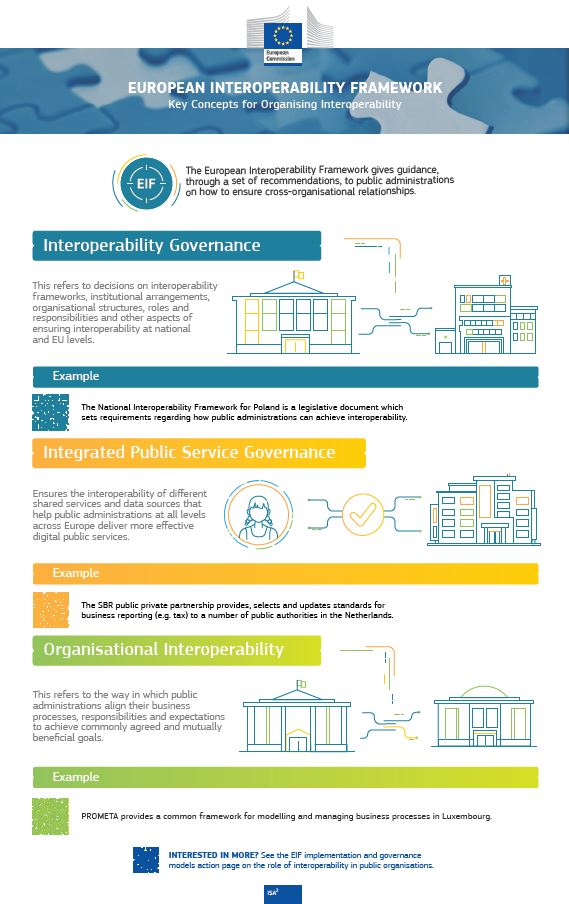
Organising interoperability for borderless digital public services
Victoria Kalogirou and Georges Lobo, Programme managers, Interoperability Unit, Directorate-General for Informatics, European Commission
The organisational and governance aspects of interoperability are a crucial element in the development and delivery of European digital public services. Ongoing work is focused on clarifying and providing guidance on the implementation of these concepts.
Borderless digital public services are one of the key ambitions outlined in the European Commission Digital Strategy. The goal is nothing less than a digital transformation, a borderless Europe where citizens and businesses can easily access user-centric public services that meet their needs, where digital solutions work smoothly across organisations, and where concepts such as the once-only principle are fully implemented. Achieving this goal will benefit lives across Europe, reducing administrative hassle and enabling access to services.
One of the main challenges to achieving this vision is making sure that the underlying IT systems that support public services in different countries, regions and sectors are interoperable. That these systems are able to exchange data and information in an uninterrupted manner. It is easy to mistakenly reduce this issue to only technical challenges associated with interoperability. However, in fact, organisational questions provide an equal and even greater challenge.
Organisational challenge – can we align on tasks and processes under a common framework?
The organisational aspects of interoperability are about getting organisations with different priorities and capabilities to agree on how they will collaborate. To take one digital public service as an example, imagine a set-up where child benefits are allocated automatically upon the birth of a child. Such an achievement could require a number of institutions to work together, from the local registrar’s office that registers the birth, to the general register office that issues a unique ID number to the child, to the child benefit agency responsible for the eligibility check for the benefits.
Even if these organisations agree on technical and semantic standards to enable them to exchange data and information, they still have to agree on the processes by which this service will be delivered. They will have to agree how the different organisations provide the required inputs, and align their procedures. These types of issues fall under the heading of organisational interoperability within the conceptual model provided by the European Interoperability Framework (EIF).
Good governance – making and enforcing effective decisions
Another set of challenges is provided when we consider who is responsible for making these decisions and how they can ensure that the agreements reached are adhered to. These same questions of who and how apply to the decisions and agreements reached on the other “interoperability layers”- i.e. over which technical and semantic standards should be used, and how any necessary legal changes are implemented. These issues fit under the conceptual model of integrated public service governance in the EIF.
A digital public administration has to cope with these issues not just for a single public service but for many of them. It will also want to ensure that a similar approach is followed in a wide range of areas i.e. from health to taxation. To do this, public administrations can provide support across sectors ranging from national interoperability frameworks that set out a general approach on interoperability, to modelling tools and recommended approaches for the selection of standards. The provision of such guidance falls under the EIF model of interoperability governance. All these 3 concepts (organisational interoperability, integrated public services and interoperability governance) are also described in the infographic below.
Sharing experiences and good practices
/isa2/file/organisinginteroperability-infographicjpg_enorganisinginteroperability-infographic.jpg

A final set of case studies and recommendations will be validated by experts from both the public and private sector and academia during the 2nd workshop on 2 October 2019. The results will be made publicly available. We believe that the organisational and governance issues, sometimes neglected in discussions on interoperability, are crucial if the vision of user-centric borderless digital public services is to be fulfilled. We look forward to sharing more guidance on these concepts as the work continues, and helping public authorities achieve this vision of providing cross-border services seamlessly for citizens.


